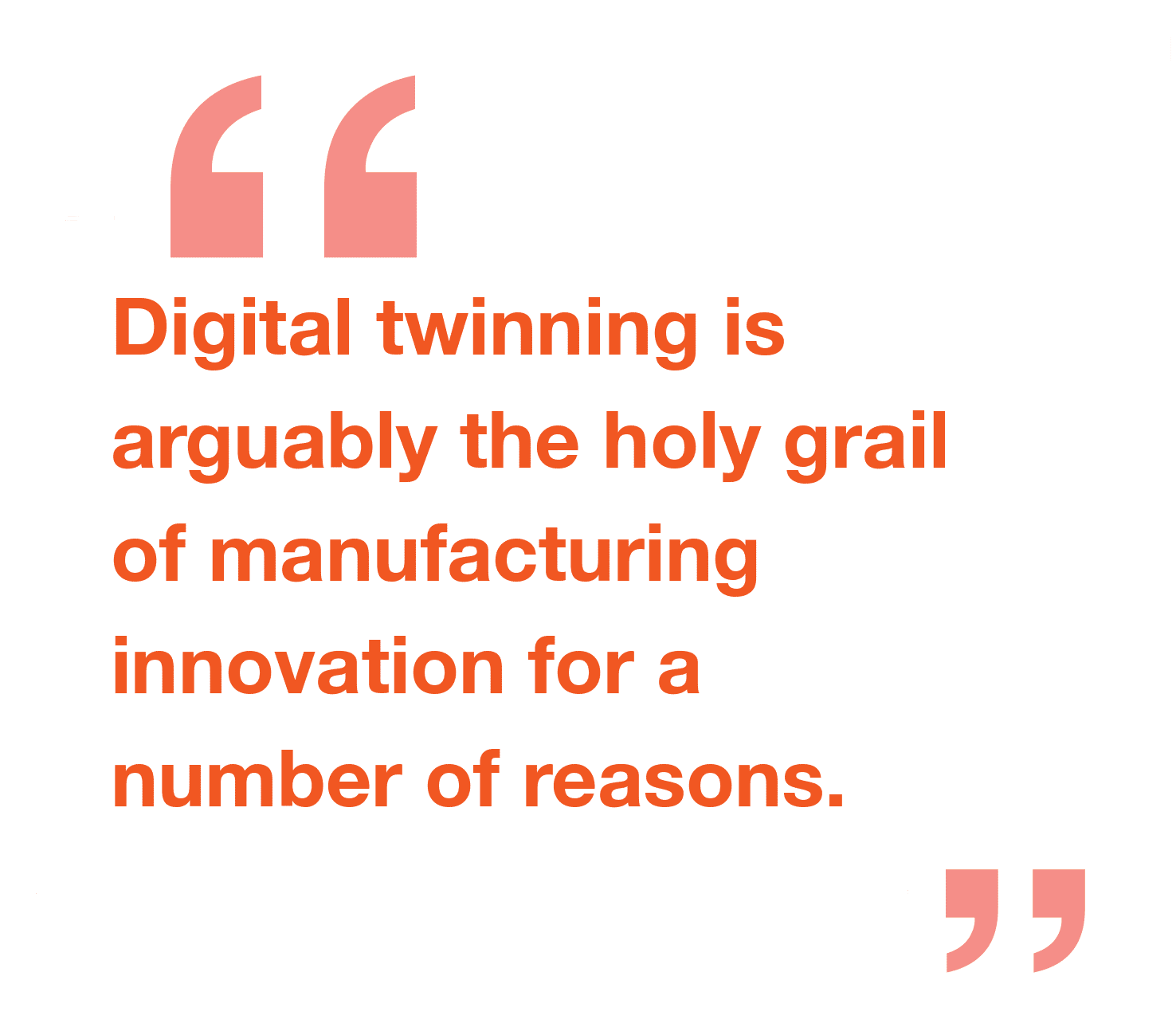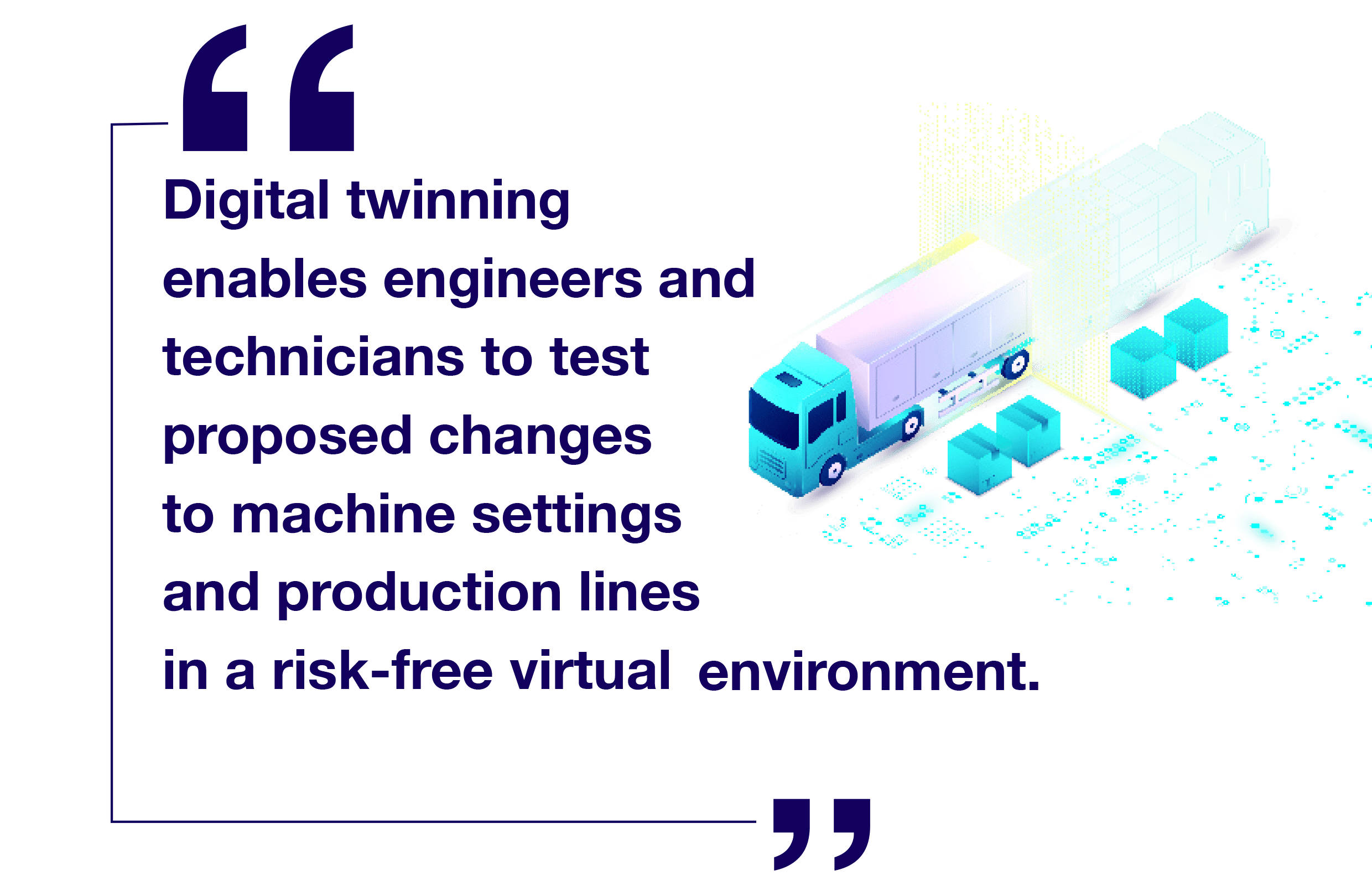HOW DIGITAL TWINS ARE AUGMENTING THE HUMAN WORKFORCE

THE REVOLUTION OF INDUSTRY 4.0 AIMS NOT ONLY AT DIGITALISATION AND AUTOMATION OF MECHANICAL PROCESSES; IT CAN ALSO AUGMENT HUMAN WORKFORCES BY EMPOWERING THEM WITH DATA-DRIVEN INSIGHTS. THE CONCEPT OF DIGITAL TWINNING IS A GOOD EXAMPLE OF THIS. THE AIM OF DIGITAL TWINNING IS TO PROVIDE PURPOSE-DRIVEN INFORMATION, TO MAKE THE JOBS OF THE WORKFORCE EASIER AND THEIR WORK MORE SUSTAINABLE.
The need for digitisation in the manufacturing sector is currently clearer than ever, but not as a means to replace people. It is to give them a greater sense of purpose, perspective, and priority. After all, manufacturers face growing pressures to adopt more sustainable business models, while also accommodating a soaring demand in a constantly evolving global economy. As a result, production environments and supply chains alike have become incredibly complex, and it has never been more important to have the right information on hand at the right time to support informed decision-making.

Data has become the world’s most valuable resource. With the right tooling in place, data becomes the fuel driving not just automation, but also informed decision-making, and continuous improvement. In the age of IIoT-connected machines and information systems, manufacturers now have the opportunity to gather data more effectively and transfer that into useful information for the workforce. What matters even more, though, is that they have the means to transform this information into actionable insights.
How digital twinning facilitates decision-making in modern manufacturing
As a virtual representation of a real-world object or environment, a digital twin can address possible consequences of adjustments in the current system based on measured data. In manufacturing, this might be in a virtual representation of a particular product, machine, production line, or even an entire shop floor.
There is, however, much more to digital twinning than simply creating a digital equivalent of a real-world object. A true digital twin continuously synchronises operational data from its counterpart, to provide an accurate, relevant, and current representation of this information, that is valuable and tailored to the workforce.
Digital twinning is arguably the holy grail of manufacturing innovation for a number of reasons. It allows for more than only the primary function of a digital twin: providing a digital representation of a physical object. Digital twinning namely also aims to combine measured data with data generated during the design phase of the object, which subsequently allows for a simulation of real-world scenarios and to show simulated data. This enables to facilitate a continuous feedback loop that can be used for validation, optimisation, and simulation -without affecting the daily operations.
In manufacturing, one of the most important use cases for digital twinning is decision support. After all, there are many factors that influence the outcomes of decisions in production environments, that are often not explicit. Digital twinning supports decision-making by showing possible outcomes of decisions and, in this way, it largely eliminates the possibility to misinformed changes in live production environments.
Many production lines depend on highly specialised, proprietary equipment that is not only extremely expensive, but also hard to operate and maintain. As such, any changes need to be tested thoroughly before they can be safely applied in a real-world scenario. Ineffective changes could lead to standstill or unwanted situations on the shop floor. Digital twinning enables engineers and technicians to test proposed changes to machine settings and production lines in a risk-free virtual environment.
In addition to reducing risk by thoroughly testing proposed changes, digital twinning also gives technicians the opportunity to evaluate different scenarios in order to continuously optimise production lines.
Empowering purpose-driven implementation
When augmented by real-time data gathered from industrial loT technology on the shop floor, workforces can equip themselves with foresight with a degree of accuracy that simply wasn’t possible before. This allows them not only to get a clearer understanding of the purpose of any proposed implementations, but also the requirements of those implementations, along with their anticipated results.
This is best achieved by following a model based on purpose, perspective, and priority. The purpose of a project can be defined and evaluated in a traditional workshop- or interview-type setting, preferably involving all stakeholders -from company owners to workers on the shop floor. Perspective comes from having the required information available and represented in the required and appropriate way to make an informed decision, hence the role of digital twinning. Finally, priority helps determine the amount of detail that is required for the user.
The traditional approach of process formalisation focuses on enhancing productivity by defining processes and analysing activities. This approach is inherently limited, when it comes to the effective implementation of new technologies. Processes must also be defined by metrics like quality, sustainability, time factors, and production flexibility. After all, modern production environments are dynamic and often unpredictable, hence the need to have access to the right information at the right time. Combined with purpose-driven information management, digital twinning can help overcome those hurdles and drive continuous improvement in the era of Industry 4.0.
